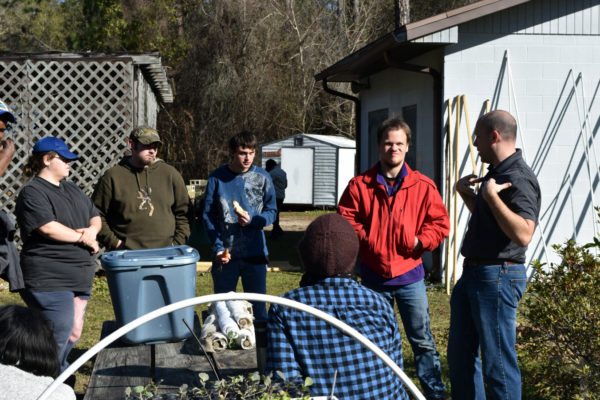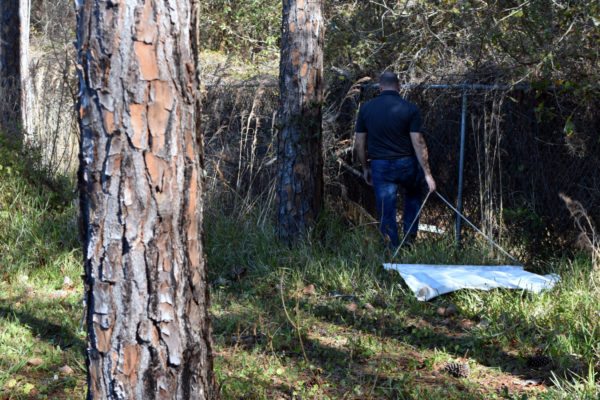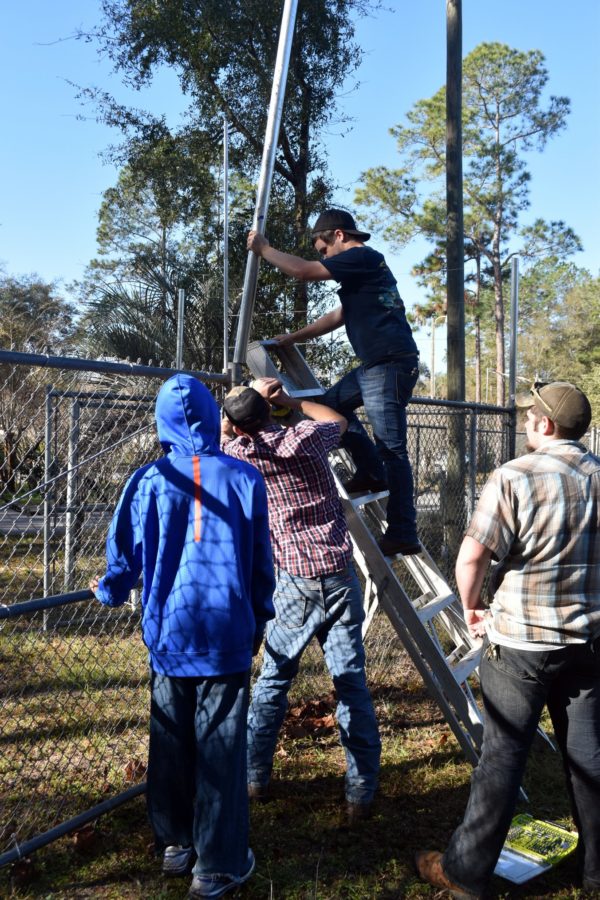Our educational center adjoins heavily forested area where many deer live. The gardens are a tempting dessert to the brush and grass they usually make a meal of. Last year, the deer were in the garden beds as soon as we were – leaving their little hoof prints all over the freshly tilled earth the night after it was tilled. One of our first big construction chores was to build a deer fence.

first deer fence project – September 2014
Later, when deer found a way under it, we filled in some gaps and installed sturdier gates.

deer fencing amendments – spring 2015
Now, with an additional, and much larger, garden area, we are building a new deer fence – attached above the original chain link one. Things were going great until we got to the area adjoining the woods and realized what a tick infestation looks like. Work was halted immediately, and we just hoped the deer would not realize how easy it would be to jump over the current fence. After a recent cold snap, we wondered if the ticks might have become dormant, but who wanted to find out?
Last week, our friends at the University of Florida’s Institute of Food and Agricultural Sciences, came through again, when Entomologist Jeff visited our site. He gave a presentation to the students where they could view different types of (dead) ticks close up.

tick in a bottle
Jeff explained how ticks ambush people and animals by standing on their back legs on plants and waving their arms, waiting to sink their little clawed hands into someone’s loose clothing – and why it is so hard to pull a tick off once it has embedded itself (little hooks on its mouth too).

Explaining how ticks grab onto passersby
Then Jeff did a “trick drag” through the previously most infested areas. No ticks!

tick drag
The cold has knocked them back temporarily, and our students are working quickly to get the fence up before they inevitably wake up again in the spring.

fence builders at it again




